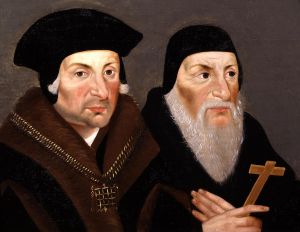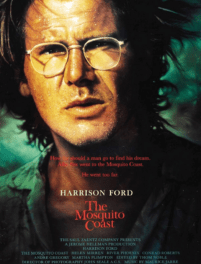We support our Publishers and Content Creators. You can view this story on their website by CLICKING HERE.
Joseph Pearce’s “C.S. Lewis and the Catholic Church” presents a compelling case in suggesting that its subject evolved “into a very Catholic sort of Protestant.” Though C.S. Lewis never became a Roman Catholic, his later works betray a growing affinity for Catholic teaching.
C. S. Lewis and the Catholic Church, by Joseph Pearce (220 pages, Ignatius Press, 2003)
Although C.S. Lewis commenced early upon a spiritual journey that seemed destined to end nowhere else but Rome, there were ineluctable sticking points along the way. Foremost were papal authority and Marian devotion. But many a conversion has been impeded by such concerns, observes the author of C.S. Lewis and the Catholic Church. He would know. Joseph Pearce has written prolifically on the conversions of diverse English writers—Ronald Knox, Evelyn Waugh, Edith Sitwell, Muriel Spark, and Malcolm Muggeridge, to name several. These men and women of letters also resisted the call of the Scarlet Woman.
Yet, unlike theirs, Lewis’s reluctance to covert was indomitable, Mr. Pearce concludes, for it stemmed from an obdurate phobia instilled in Lewis by his Ulster-Protestant, traditionally Catholic-baiting family and ancestors, by whose collective voice, Lewis confessed, “I had been (implicitly) warned never to trust a Papist.” Mr. Pearce, one of Lewis’s ardent allies but thankfully not one of the “terrible simplifiers” (in Burchardt’s apt phrase), deals fairly yet reverently with Lewis’s anti-Catholic tendencies, exemplifying and mitigating with reference to letters, standard biographies, and sound Lewis scholarship.
One of the truly fascinating episodes in Mr. Pearce’s probing book centers on the tension between Lewis and the neglected, critically maligned British poet Roy Campbell, whom conservative author Russell Kirk defiantly praised as “the last of the scalds, for, like the Viking scalds, Campbell was fearless, outrageous, and reckless, at once a doer of deeds and a singer of them.” In Campbell, Mr. Pearce finds an illuminating foil to Lewis. While the latter was by nature an intellectual (in the best sense of the word), whose battles were fought in the lists of ideas, the former was something of a modern-day Sidney or Sir Walter Ralegh.
Before he and Lewis were formally introduced in October 1944, Campbell had fought valiantly for the Nationalist cause in the Spanish Civil War. He and his family, who were living in Spain when the war began, were lucky to survive it. “Many of his friends were not so lucky,” Mr. Pearce reminds us. (Mr. Pearce is no stranger to Kirk’s scald, having dealt sympathetically with him in Bloomsbury and Beyond: The Friends and Enemies of Roy Campbell.) “The priest who had received Roy and his wife, Mary, into the Catholic Church in 1935 was murdered in cold blood in the following year by communist militiamen, as were the Carmelite monks whom Roy and Mary befriended in Toledo.”
Campbell eulogized Franco’s victorious forces in Flowering Rifle, a controversial long poem that elicited (not surprisingly) animadversions from the literati of the time. Lewis himself responded posthaste with “to the Author of Flowering Rifle,” a lyrical lampoon of Campbell and his politically incorrect views. Lewis’s riposte, which appeared in Cherwell magazine on May 6, 1939, was justified, admits Mr. Pearce, insofar as it “condemned Campbell’s lack of charity…. ” But, as Mr. Pearce is quick to add, Lewis’s “simplistic approach to the religious and philosophical dynamics of the war in Spain exposed his own political naiveté.” Unlike Lewis, Campbell saw the war for what it really was: a veritable battle “to the death between traditional Christianity and secular atheism,” as Mr. Pearce describes it.
J.R.R. Tolkien was certain, relates Mr. Pearce, that “Lewis’s judgment about Campbell in particular, and the Spanish Civil War in general, was the result of a knee-jerk reaction arising out of his anti-Catholicism.” Lewis had been reluctant, after all, to believe that anti-Franco communists actually tortured and slew thousands of priests, monks, and nuns. Had he been convinced of such, Tolkien notes in his letters, Lewis would have probably thought they “asked for it.” There is no “greater tribute to Red propaganda,” remarked Tolkien, “than the fact that he [Lewis] (who knows they [the communists] are, in all other subjects, liars and traducers) believes all that is said against Franco, and nothing that is said for him.”
Be that as it may have been, Mr. Pearce is careful to show that Lewis’s Ulster-Protestant intolerance was not entirely insurmountable. In the decade succeeding their first meeting (at which Lewis belligerently, and to the chagrin of Tolkien, read his lampoon aloud), Lewis and Campbell became intimate allies in what Mr. Pearce calls “the battle against common literary foes.” Campbell, whom Lewis ultimately forgave for Flowering Rifle, became a welcome presence at Lewis’s lively scholarly gatherings, where the erstwhile antagonists, who “still crossed swords,” as Mr. Pearce puts it, were seen to be “arguing as friends,” and no longer “quarreling as enemies.”
Besides Campbell, two better-known Catholics figure prominently in Mr. Pearce’s study. There is G.K. Chesterton, whose moral and theological elucidations in The Everlasting Man cured Lewis of a youthful bout of atheism and permanently disposed him to religious orthodoxy. Then there is Tolkien. If Lewis’s atheism was cured by exposure to Chesterton’s everlasting challenge to the chronological arrogance of H.G. Wells, his love of Christ was born and quickened in conversations with this now internationally famous author of The Lord of the Rings. Had he never met Tolkien, argues Mr. Pearce, it is quite possible that Lewis might never have become a Christian and subsequently joined the Anglican Church, as he did not long after their first encounter.
Chesterton and Tolkien had a profound and distinctively Catholic effect on the tenor of Lewis’s creative endeavors. Take, for instance, The Pilgrim’s Regress. When it rolled off the press in 1933, seven years after Lewis’s first exchange of ideas with Tolkien and a decade and a half after his first being bowled over by the perennial wisdom of Chesterton, readers assumed that its author was soon to be included among the growing number of converts to Catholicism. Indeed, back of this autobiographical depiction of Lewis’s emergence from the abyss of atheistic modernism and into the light of Christianity is something inferably more Catholic than Protestant.
Apart from its title and allegorical medium, The Pilgrim’s Regress owes less to Puritan writer John Bunyan, author of Pilgrim’s Progress, than to Dante and his mentor Thomas Aquinas, the philosopher-saint who “emerges,” says Mr. Pearce, “as the preeminent and towering influence on the structure of Lewis’s allegorical ‘Regress.’” Its protagonist, for example, is instructed and edified by “Mother Kirk,”—Dante’s and Thomas’s Catholic Church personified—whose extensive monologue Lewis ends rather oddly “with the assertion [in Mr. Pearce’s words] that the language of Mother Church is Latin,” not the vernacular to which the Anglican Church had succumbed long before Lewis joined its flock.
Of the many reviews that promptly followed the publication of The Pilgrim’s Regress, W. Norman Pittenger’s is typical. On the evidence of the book alone, Pittenger, an Anglican priest writing for The Living Church, fancied the pilgrim’s final “resting place” to be none other than the Church of Rome. “Anglicans,” wrote Pittenger mistakenly if understandably, “may wish that he had come their way, but Mr. Lewis, who is a Roman Catholic, does not see it so.”
Though Lewis never became a Roman Catholic, his later works betray a growing affinity for Catholic teaching. Pearce adduces one of many examples of this development from Mere Christianity, Lewis’s most popular book. In the chapter on “Sexual Morality,” Lewis maintains that, while it is no doubt a capital vice, lust is not the worst of the seven deadly sins, which are for him ever “purely spiritual.” Pride, he insists, is the worst, the “supreme vice,” the begetter and mother of all other sins. Here, according to Pearce, “Lewis was following the teaching of the Church, which relies in part on sacred tradition and not on sola scriptura.”
Or was he not following Dante, as he had done in The Pilgrim’s Regress, and then later, and more consciously, in his purgatorial “Dream,” The Great Divorce? In the latter, writes Mr. Pearce, “Lewis delved deeper into the truths of Christianity… than in much of his prose didacticism.” As artistically masterful as it is atmospherically Catholic, The Great Divorce is unquestionably one of Lewis’s finest creations. “Although it cannot, of course, compare in scope and plenitude with Dante’s great poem,” wrote Lewis biographers Roger Lancelyn Green and Walter Hooper, “the book can certainly be said to be Lewis’s Divine Comedy, and the parallels between the two works are numerous.”
In his later years, Lewis became increasingly dissatisfied with Protestantism, which had begun to conform itself to the vagaries of the muddled modern mind. His space trilogy—Out of the Silent Planet, Perelandra, and That Hideous Strength—is nothing less than a stand against scientism and philosophical materialism. Lewis’s anti-modernism comes to the fore in his published protests against the mid-century movement to ordain women in the Anglican Church, protests that Mr. Pearce attributes to Lewis’s Catholic understanding of the priesthood. For Lewis, if not for a growing faction of his fellow Anglicans, the priesthood was something more than merely another “job.” For him, as Mr. Pearce explains, it “was a mystical calling, sacramental in nature, which had been pre-ordained by God Himself as a masculine function as motherhood had been pre-ordained as a feminine function.”
C.S. Lewis and the Catholic Church presents a compelling case in suggesting that its subject evolved “into a very Catholic sort of Protestant.” As Thomas Howard writes in the Foreword, “[Lewis’s] faith came to embrace all sorts of doctrines and practices that his evangelical readers (who are his most enthusiastic clientele) must sedulously ignore.” In his final years, Lewis “spoke of ‘the Blessed Virgin,’ and made his confession to his priest regularly, and believed in purgatory, and even came to refer to the Eucharist as—heaven help us all—the Mass!”
Lewis was only 65 when he died. Would he have become a Catholic—in spite of his Ulster-Protestant sensibilities—if he had lived another decade? Yes, responded Mr. Hooper (Lewis’s best-known biographer) when asked the question in 1994. When the Anglican Church surrendered to liberalism, Lewis would have been left with no choice but to “go where the faith actually still is Christian.”
Whether Mr. Hooper is correct is an intriguing point of conjecture. What remains indisputable, however, is the reality that, since his death in 1963, Lewis has been the acknowledged catalyst of countless conversions. Why so many have called Lewis a “Signpost to Catholicism” has been made clearer by Joseph Pearce, in whose own conversion “Lewis’s role was not insignificant.”
Yes, Mr. Pearce himself is a convert. But his study of Lewis was not written for Catholics alone. It was written, he tells us in his Preface, “for those who share my love for Lewis, regardless of whether they share my love for the Catholic Church.” Mr. Pearce has tried “not to cherish” his “own position, but to discover the true one.” On both counts, he has been successful, and his accomplishment should be recognized as a major contribution to Lewis studies.
This essay was first published here in June 2020.
The Imaginative Conservative applies the principle of appreciation to the discussion of culture and politics as we approach dialogue with magnanimity rather than with mere civility. Will you help us remain a refreshing oasis in the increasingly contentious arena of modern discourse? Please consider donating now.

 Conservative
Conservative  Search
Search Trending
Trending Current News
Current News 






